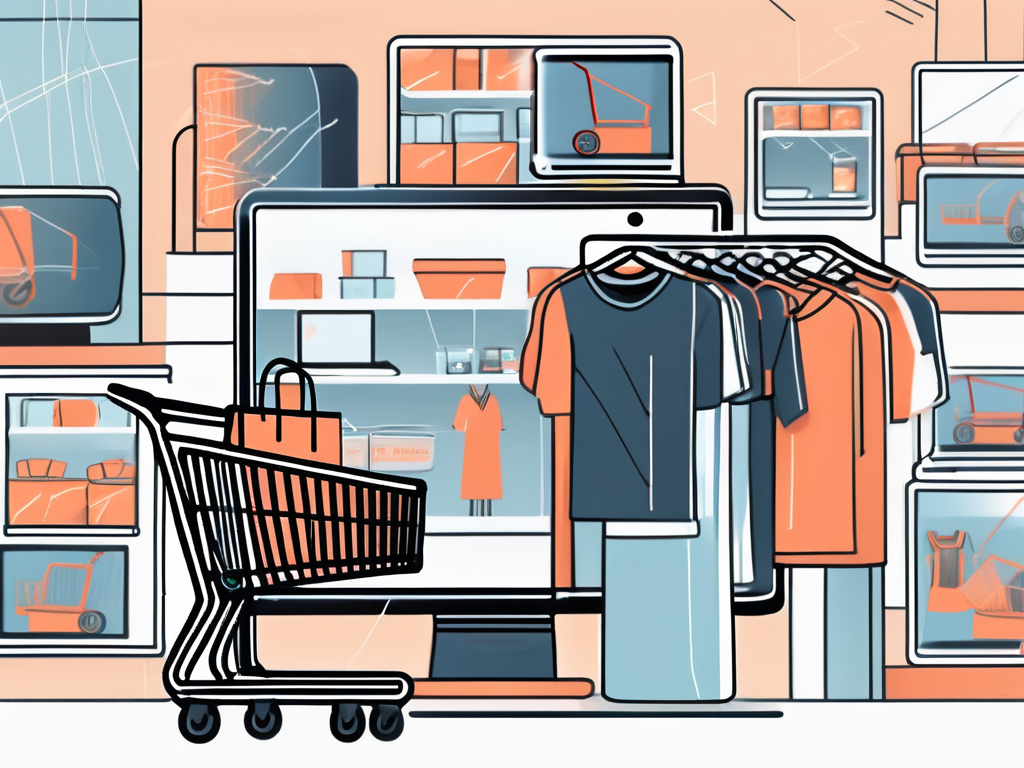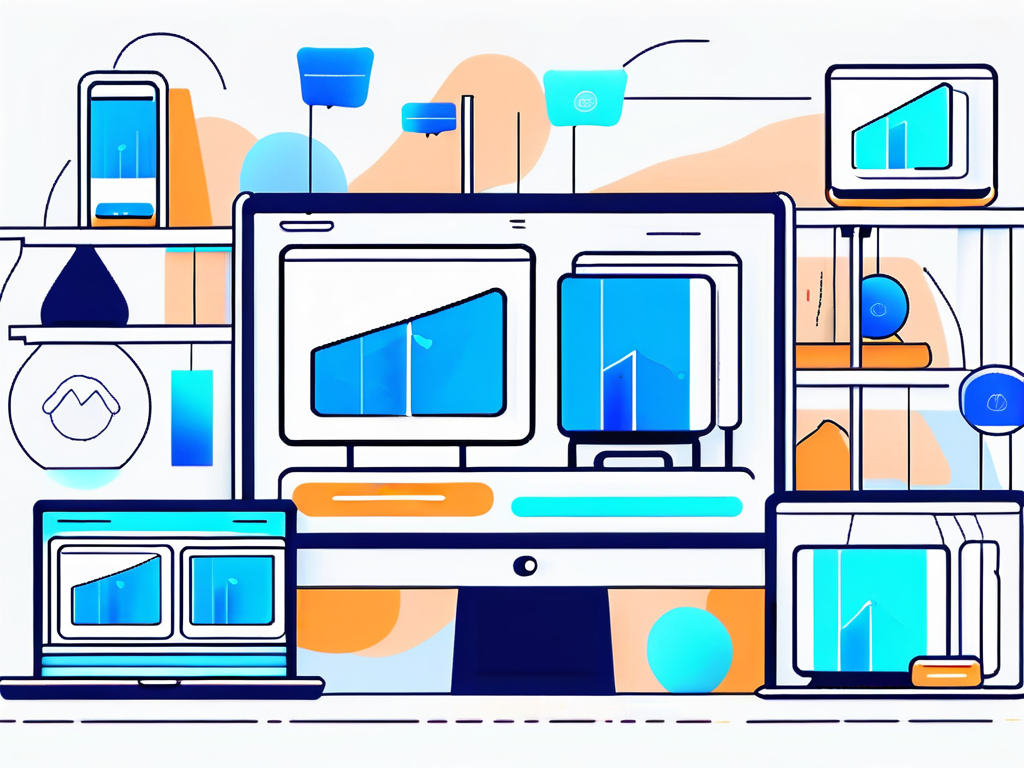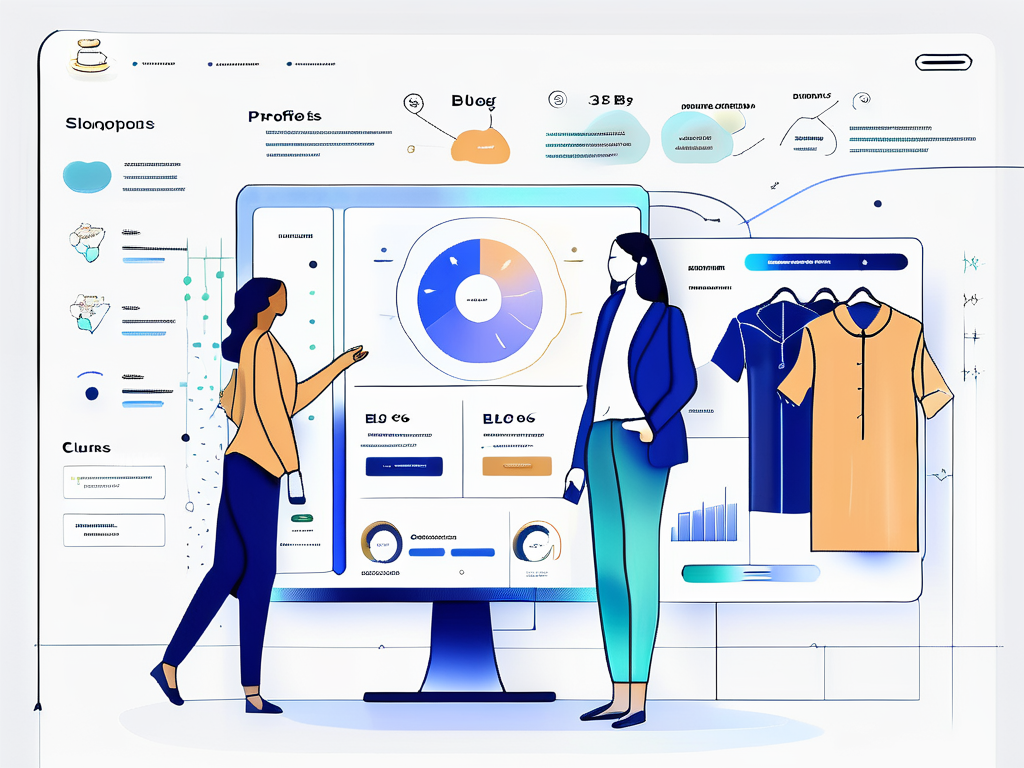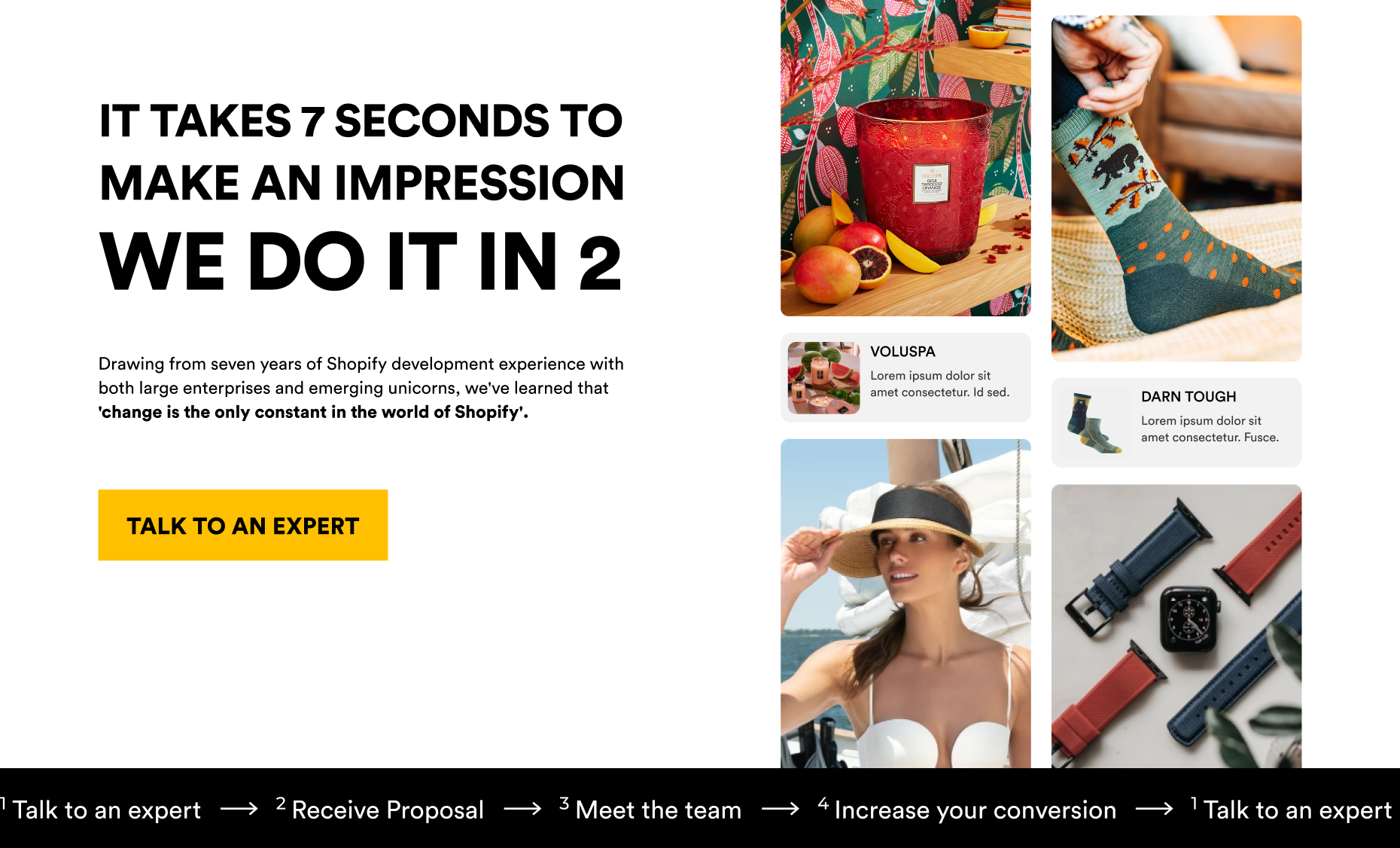
Discover how the rise of omni-channel retailing is revolutionizing the shopping experience and how Shopify is empowering businesses to seamlessly integrate online and offline sales channels.
In today's digital age, the retail landscape has undergone a significant transformation. Gone are the days when shoppers had to visit physical stores to fulfill their purchasing needs. With the rise of e-commerce and advancements in technology, consumers now have the convenience of shopping anytime, anywhere.
The Evolution of Retailing in the Digital Age
Retailing has evolved over time, adapting to the changing needs and preferences of consumers. Traditional brick-and-mortar stores were the primary means of shopping for decades. However, with the introduction of online shopping, a new era of retailing emerged. This shift not only transformed the way people shop but also revolutionized the entire retail industry.
E-commerce platforms like Shopify played a pivotal role in this retail revolution. These platforms provided a gateway for businesses to establish their online presence and reach a wider audience. With Shopify's user-friendly interface and robust features, retailers could create customized online stores without requiring extensive technical knowledge.
As technology continued to advance, mobile commerce (m-commerce) became increasingly popular. Consumers now had the convenience of shopping on their smartphones and tablets, anytime and anywhere. This shift towards mobile shopping prompted retailers to optimize their websites for mobile devices, ensuring a seamless shopping experience for their customers.
Furthermore, the rise of social media platforms like Instagram and Facebook has transformed the way retailers engage with their audience. Through targeted advertising and influencer partnerships, retailers can now reach potential customers in a more personalized and direct manner. Social commerce has become a powerful tool for retailers to showcase their products and drive sales in a highly competitive market.
Understanding Omni-Channel Retailing
Omni-channel retailing goes beyond the boundaries of traditional online and offline shopping. It aims to provide a seamless and integrated shopping experience across multiple channels. Whether it's shopping from a physical store, website, mobile app, or even through social media platforms, consumers expect a consistent experience.
Omni-channel retailing recognizes that consumers use various touchpoints throughout the purchasing journey. These touchpoints include researching products online, visiting physical stores to test products, and ultimately making the final purchase. By integrating these touchpoints, retailers can create a cohesive and engaging shopping experience.
One key aspect of omni-channel retailing is the ability to track customer interactions across different channels. This data allows retailers to gain valuable insights into consumer behavior, preferences, and trends. By analyzing this information, retailers can personalize marketing strategies, recommend products based on past purchases, and improve overall customer satisfaction.
Furthermore, omni-channel retailing involves the seamless integration of inventory and fulfillment systems. This ensures that customers have access to real-time product availability information regardless of the channel they are using. By optimizing inventory management and order fulfillment processes, retailers can prevent stockouts, reduce delivery times, and enhance the overall shopping experience for customers.
The Role of Shopify in the Retail Revolution
Shopify has truly revolutionized the retail industry by providing a robust and user-friendly platform for businesses of all sizes to thrive in the digital age. With its array of features and tools, Shopify empowers retailers to not only establish their online presence but also to scale their operations efficiently. The platform's flexibility allows businesses to customize their online stores to reflect their brand identity, creating a unique and engaging shopping experience for customers.

Furthermore, Shopify's integration capabilities extend beyond just online and offline channels. Through its partnerships with various third-party apps and services, Shopify offers retailers endless possibilities for expanding their reach and enhancing their operations. From email marketing and customer relationship management to inventory management and analytics, Shopify provides a comprehensive ecosystem to support every aspect of a retail business.
As the retail landscape continues to evolve, Shopify remains at the forefront, constantly innovating and adapting to meet the changing needs of retailers and consumers alike. With its commitment to providing cutting-edge solutions and unparalleled support, Shopify is not just a platform for selling products but a partner in driving the future of retail.
Integrating Physical and Digital Retail Experiences
While online shopping presents convenience, physical stores offer a unique and immersive experience. To capitalize on the strengths of both channels, retailers must integrate physical and digital retail experiences seamlessly. This integration means providing consumers with the flexibility to browse and purchase products both online and in-store.
For instance, a customer may discover a product online but want to try it in person before making the final purchase. By offering services like click-and-collect, retailers can bridge the gap between online and offline channels. Customers can place orders online and pick them up from a nearby store, enjoying the best of both worlds.
Moreover, integrating physical and digital retail experiences can also enhance customer engagement and loyalty. By leveraging technologies such as augmented reality (AR) and virtual reality (VR), retailers can create interactive and personalized shopping experiences. Imagine a scenario where customers can virtually try on clothes or visualize how furniture would look in their homes before making a purchase. These immersive experiences not only add value to the shopping process but also leave a lasting impression on customers, increasing the likelihood of repeat business.
Additionally, the integration of physical and digital retail experiences allows retailers to gather valuable data on customer preferences and behavior. By tracking online and in-store interactions, retailers can gain insights into customer shopping patterns, popular products, and even individual preferences. This data can then be used to tailor marketing strategies, optimize product offerings, and improve overall customer satisfaction. In this data-driven age, the ability to collect and analyze customer data is a powerful tool for retailers looking to stay competitive in the ever-evolving retail landscape.
Maximizing Customer Engagement Across Channels
Engaging customers across various channels is essential for an effective omni-channel strategy. It's not just about having a presence, but actively interacting with consumers to build lasting relationships. Social media platforms, for example, play a vital role in connecting retailers with their target audience.
Through social media marketing, retailers can share engaging content, promote products, and respond to customer queries. This direct interaction builds trust and encourages repeat purchases. Additionally, retailers can utilize email marketing to reach out to customers, providing personalized offers and recommendations based on their browsing and purchase history.
Leveraging Data for Personalized Shopping Experiences
Data is a valuable asset in the omni-channel retail landscape. Retailers can leverage customer data to provide personalized shopping experiences across channels. By analyzing customer behavior and preferences, retailers can offer tailored product recommendations and targeted promotions.

Furthermore, data can help retailers gain insights into customer purchasing patterns. This information can guide inventory management, ensuring the right products are available at the right time. It also enables retailers to track customer journeys, identifying pain points and areas for improvement.
Challenges and Opportunities of Omni-Channel Retailing
While omni-channel retailing offers numerous benefits, it also comes with its fair share of challenges. One of the key challenges is maintaining consistency across channels. Customers expect a seamless experience, and any inconsistencies may result in a loss of trust and loyalty.
Another challenge is the complexity of implementing and managing multiple channels. Each channel requires careful attention to detail and regular maintenance. Retailers must invest in robust systems and processes to ensure that all channels work harmoniously together.
However, these challenges also bring opportunities for growth. Retailers who successfully navigate the omni-channel landscape can attract and retain more customers, increase sales, and gain a competitive advantage in the market.
Strategies for Success in the Omni-Channel Landscape
To thrive in the omni-channel retail landscape, retailers must adopt strategies that cater to the evolving needs and expectations of consumers. Some key strategies include:
- Investing in a robust e-commerce platform like Shopify to establish a seamless online presence.
- Creating a cohesive brand experience across all channels, ensuring consistency in messaging, design, and customer service.
- Offering flexible fulfillment options like click-and-collect to bridge the gap between online and offline channels.
- Utilizing data analytics to understand customer behavior and preferences, enabling personalized shopping experiences.
- Embracing social media marketing to engage with customers and build brand loyalty.
Case Studies of Successful Omni-Channel Retailers
Several retailers have successfully implemented omni-channel strategies and achieved remarkable results. One such example is Nike, known for its innovative approach to retail. Nike seamlessly integrates its website, physical stores, and mobile apps, offering personalized product recommendations and loyalty rewards.

Another notable case is Best Buy, a multinational electronics retailer. Best Buy leverages its online and offline presence to provide customers with a seamless shopping experience. They offer in-store pickup, same-day delivery, and expert advice both online and in-store.
The Future of Retail: Trends and Innovations in Omni-Channel Strategies
The future of retail lies in the continued evolution of omni-channel strategies. As technology advances, new opportunities arise for retailers to engage with consumers. Some emerging trends and innovations to watch out for include:
- Augmented reality (AR) and virtual reality (VR) experiences to enhance the in-store and online shopping experience.
- Artificial intelligence (AI) to provide personalized product recommendations and virtual shopping assistants.
- Integration of social commerce, allowing customers to make purchases directly from social media platforms.
- Expanded use of mobile payment options, making transactions quicker and more convenient.
As consumer expectations continue to evolve, retailers must adapt and embrace these trends to stay relevant and competitive in the ever-changing retail landscape.
In conclusion, the rise of omni-channel retailing and the role of platforms like Shopify have revolutionized the retail industry. Retailers must understand the importance of integrating physical and digital retail experiences to provide a seamless shopping journey for consumers. By leveraging data and adopting effective strategies, retailers can maximize customer engagement and stay ahead of the competition. The future of retail lies in embracing emerging trends and innovations, adapting to the changing needs of consumers in the digital age.











